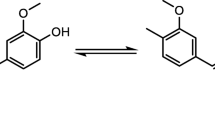Abstract
Purpose
Lepiota brunneoincarnata is a well-known poisonous mushroom and is responsible for fatal mushroom poisoning cases worldwide. α-Amanitin and β-amanitin are the main amatoxin compounds of Lepiota brunneoincarnata. However, there are no published toxicokinetic studies of Lepiota brunneoincarnata. To study the toxicokinetics of Lepiota brunneoincarnata, we developed an ultra-performance liquid chromatography−tandem mass spectrometry (UPLC−MS/MS) method for determination of α-amanitin and β-amanitin in rat plasma.
Methods
UPLC−MS/MS analyses were performed with a triple quadrupole mass spectrometer in positive-ion mode. The sensitivity of α-amanitin and β-amanitin detection was increased by inhibiting the production of [M + Na]+ adducts. α-Amanitin and β-amanitin were separated and quantified on an UPLC octadecyl silyl column in only 2.5 min.
Results
The linear ranges were 3.0–3000 ng/mL for α-amanitin and 1.8–1800 ng/mL for β-amanitin with a correlation coefficient r > 0.99 for both analytes. The lower limit of quantification of 3.0 ng/mL for α-amanitin and 1.8 ng/mL for β-amanitin was achieved using only 50 μL of rat plasma. The accuracy of α-amanitin and β-amanitin was between – 9.5 and 7.0% with the precision ranged from 2.2 to 12.5%. The developed method was then applied for Lepiota brunneoincarnata toxicokinetic study after intravenous administration of Lepiota brunneoincarnata extracts.
Conclusions
Establishing UPLC–MS/MS method for quantifying amanitines in rat plasma successfully enabled toxicokinetic study of Lepiota brunneoincarnata extracts.
Graphical abstract




Similar content being viewed by others
References
Ben Khelil M, Zhioua M, Bakir O, Allouche M, Gloulou F, Banasr A, Haouet S, Hedhili A, Hamdoun M (2010) Intoxication mortelle par Lepiota brunneoincarnata: à propos de 4 cas. Ann Biol Clin (Paris) 68:561–567. https://doi.org/10.1684/abc.2010.0467
Herráez García J, Sánchez Fernández A, Contreras Sánchez P (2002) Intoxicación fatal por Lepiota brunneoincarnata. An Med Interna 19:322–323 (PMID: 12152395)
Li H, Zhang H, Zhang Y, Zhou J, Yin Y, He Q, Jiang S, Ma P, Zhang Y, Wen K, Yuan Y, Lang N, Cheng B, Lu J, Sun C (2021) Mushroom poisoning outbreaks-China, 2020. China CDC Weekly 3:41‒45. https://doi.org/10.46234/ccdcw2021.014
Sgambelluri RM, Epis S, Sassera D, Luo H, Angelos ER, Walton JD (2014) Profiling of amatoxins and phallotoxins in the genus Lepiota by liquid chromatography combined with UV absorbance and mass spectrometry. Toxins (Basel) 6:2336‒2347. https://doi.org/10.3390/toxins6082336
Angelini C, Vizzini A, Justo A, Bizzi A, Davoli P, Kaya E (2020) First report of a neotropical agaric (Lepiota spiculata, Agaricales, Basidiomycota) containing lethal α-amanitin at toxicologically relevant levels. Front Microbiol 11:1833. https://doi.org/10.3389/fmicb.2020.01833
Rodrigues DF, Pires das Neves R, Carvalho ATP, Lourdes Bastos M, Costa VM, Carvalho F, (2020) In vitro mechanistic studies on α-amanitin and its putative antidotes. Arch Toxicol 94:2061–2078. https://doi.org/10.1007/s00204-020-02718-1
Ye Y, Liu Z (2018) Management of Amanita phalloides poisoning: a literature review and update. J Crit Care 46:17–22. https://doi.org/10.1016/j.jcrc.2018.03.028
Long P, Fan F, Xu B, He Z, Su Y, Zhang P, Xie J, Chen Z (2020) Determination of amatoxins in lepiota brunneoincarnata and lepiota venenata by high-performance liquid chromatography coupled with mass spectrometry. Mycobiology 48:204–209. https://doi.org/10.1080/12298093.2020.1765718
Li C, Wei F, Muhammad S, Yang G, Wang S, Liu X (2017) A cost-effective LC-MS/MS method for identification and quantification of α-amanitin in rat plasma: application to toxicokinetic study. J Chromatogr B 1064:36–39. https://doi.org/10.1016/j.jchromb.2017.08.042
Xu X, Cai Z, Zhang J, Chen Q, Huang B, Ren Y (2017) Screening of polypeptide toxins as adulteration markers in the food containing wild edible mushroom by liquid chromatography-triple quadrupole mass spectrometry. Food Control 71:393–402. https://doi.org/10.1016/j.foodcont.2016.07.024
European Medicines Agency (2015) Guideline on bioanalytical method validation, London. https://www.ema.europa.eu/en/documents/scientific–guideline/guideline–bioanalytical–method–validation_en.pdf. Accessed 03 June 2015
Food and Drug Administration, USA (2018) Bioanalytical method validation guidance for industry. http://www.fda.gov/files/drugs/published/Bioanalytical–method–validation–guidance–for –industry.pdf. Accessed 24 May 2018
Mao Z, Wang X, Li B, Jin J, Xu M, Liu Y, Di X (2017) A simplified LC-MS/MS method for rapid determination of cycloserine in small-volume human plasma using protein precipitation coupled with dilution techniques to overcome matrix effects and its application to a pharmacokinetic study. Anal Bioanal Chem 409:3025–3032. https://doi.org/10.1007/s00216-017-0249-2
Zhang S, Zhao Y, Li H, Zhou S, Chen D, Zhang Y, Yao Q, Sun C (2016) A simple and high-throughput analysis of amatoxins and phallotoxins in human plasma, serum and urine using UPLC-MS/MS combined with PRiME HLB μElution platform. Toxins (Basel) 8(5):128. https://doi.org/10.3390/toxins8050128
Acknowledgements
This work was supported by the Natural Science Research of Jiangsu Higher Education Institutions of China (Grant No. 20KJB340001) and the National Natural Science Foundation of China (Grant No. 82002028, 81772020 and 81922041).
Author information
Authors and Affiliations
Corresponding authors
Ethics declarations
Conflict of interest
The authors declare that there are no conflicts of interest.
Ethical approval
All animal care and handling procedures used in this study were approved by the Animal Care and Ethical Committee of Nanjing Medical University.
Additional information
Publisher's Note
Springer Nature remains neutral with regard to jurisdictional claims in published maps and institutional affiliations.
Supplementary Information
Below is the link to the electronic supplementary material.
Rights and permissions
About this article
Cite this article
Mao, Z., Yu, Y., Sun, H. et al. Rapid detection of α-amanitin and β-amanitin in rat plasma by ultra-performance liquid chromatography–tandem mass spectrometry and its application to the toxicokinetic study of Lepiota brunneoincarnata. Forensic Toxicol 40, 111–118 (2022). https://doi.org/10.1007/s11419-021-00607-5
Received:
Accepted:
Published:
Issue Date:
DOI: https://doi.org/10.1007/s11419-021-00607-5




